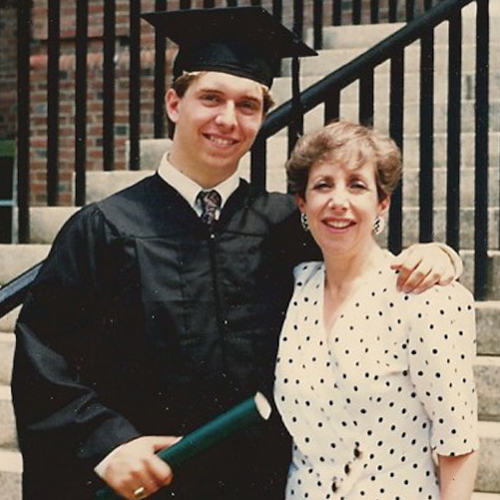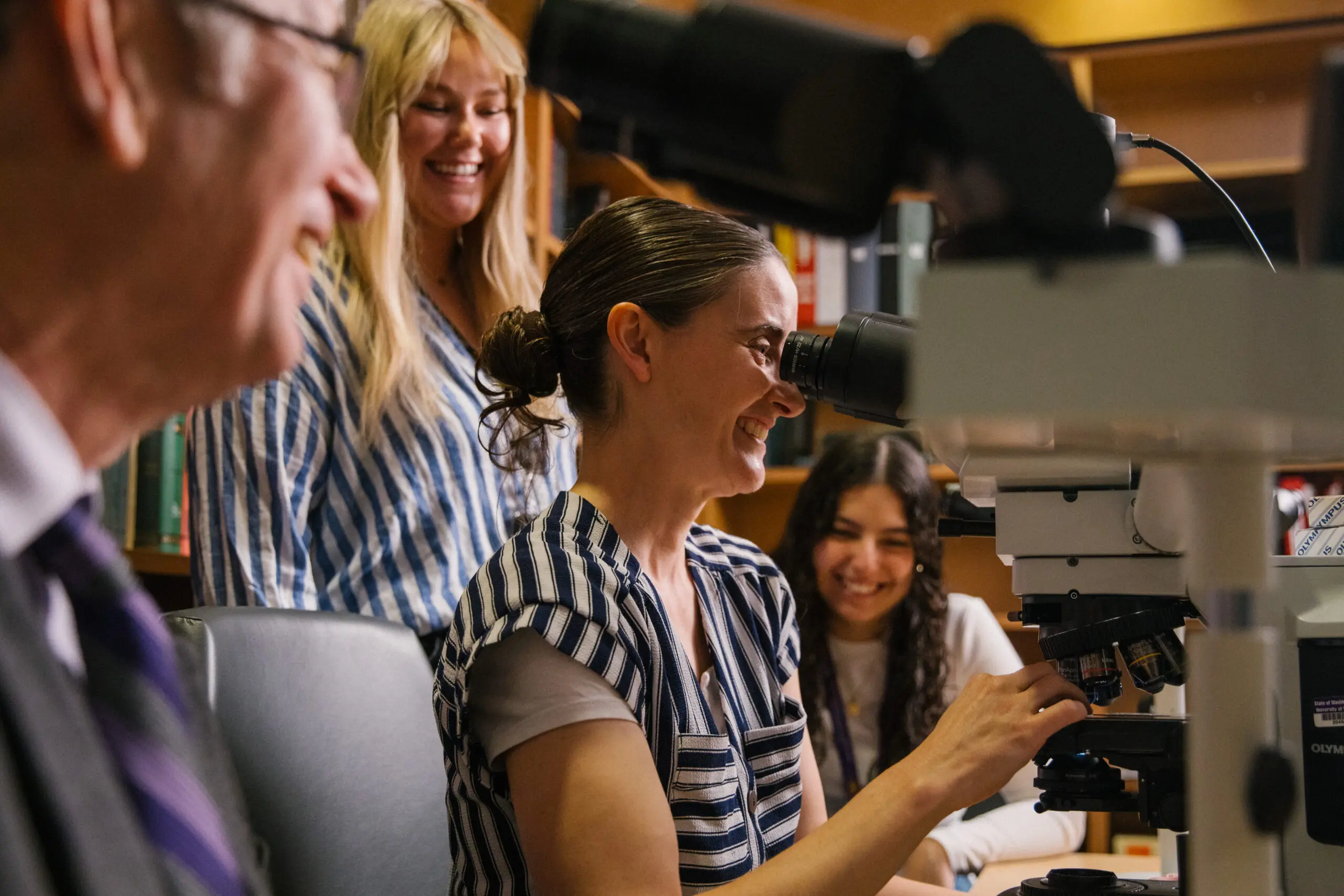 Dianne Dickson knew her health was declining, but she didn’t know why. At age 51, she began to suffer from strokes. For more than a year, doctors struggled to explain what was going on. Answers ranged from hysteria to multiple sclerosis.
Dianne Dickson knew her health was declining, but she didn’t know why. At age 51, she began to suffer from strokes. For more than a year, doctors struggled to explain what was going on. Answers ranged from hysteria to multiple sclerosis.
In the meantime, her short-term memory and other executive functions were failing. She was forced to give up her 30-year career as a regional sales manager at a textbook publisher and step down from directing the award-winning Sweet Adelines women’s chorus. Eventually, she found it too difficult to play piano or sing at all.
“CADASIL is a terrible, relentless disease. When my mother was ultimately accurately diagnosed, it was almost a relief to have a name for the thing that was robbing her of memories, relationships and passions,” says her son James Osborne.
Now they had a name — but answers still proved elusive.
A rare genetic disease with no cure
CADASIL (cerebral autosomal dominant arteriopathy with subcortical infarcts and leukoencephalopathy) is a rare genetic disease that affects blood vessels in the brain. It is caused by variants in the NOTCH-3 gene, which disrupt the normal function of the brain’s small blood vessels. Eventually these changes lead to early onset strokes and transient ischemic attacks (TIAs), which damage executive function and ultimately lead to dementia and death.
Dickson had already tested negative for CADASIL. But Drs. Kyra Becker and Thomas Bird, neurologists at UW Medicine-Harborview Medical Center, suspected a false negative after finding out that Dickson’s cousin had CADASIL and similar symptoms. Because CADASIL is a rare disease, the chance of a coincidence was slim. When they retested Dickson, it was positive for the CADASIL gene.
At present, there are no effective treatments or cures for CADASIL, which is degenerative and fatal.
Osborne, who took care of his mother during her final years, recalls feeling helpless when his mom was suffering from a TIA or a stroke. During an attack, she was unable to string words together, and all he could do was keep her as comfortable as possible.
In 2008, nearly 10 years after Dickson began experiencing symptoms, she passed away. Osborne grieved the loss of his mom and felt the weight of unanswered questions. Should he get tested? Should his brother’s family get tested? Should his kids? He wanted to see if he could help find some answers.
Deciding to go big
Osborne admits he’s no genetics expert. However, he had learned about networking and raising money during his tech start-up days. He had an idea of how he could support finding therapies for CADASIL, so he reached out to Suman Jayadev, MD, associate professor of neurology at the UW School of Medicine.
“I asked her what we could do if we had $100,000. She was very thoughtful,” he recalls. “After a few days she got back to me and said, ‘If you can bring the dollars, I can make sure they are well spent.’”
That conversation got the ball rolling.
Osborne was able to surpass his fundraising goal, and he discovered interest within the community and across the U.S. from people who knew someone with CADASIL or who were interested in his family’s story. With the support of close friends, he launched the CADASIL Eradication Project, to support cutting-edge genomic research to tackle rare diseases like CADASIL.
“I realized that my real opportunity in the advocacy space was to go big on funding hard-science research aimed at understanding — at a genetic level — how this particular monogenetic disease operates,” says Osborne.
Research with far-reaching implications
While CADASIL isn’t the focus of Jayadev’s research, she does treat patients with CADASIL. And working within UW Medicine, an academic research institution, she regularly meets with researchers and scientists to share information. So, when Osborne approached her, she knew exactly where to turn.
Lea Starita, PhD, research assistant professor of genome sciences, and her lab were developing state-of-the-art technology to study the biological consequences of gene variants in human disease. Starita was immediately intrigued at the opportunity of applying their novel approaches to investigate the NOTCH-3 gene on a molecular level. Using high throughput functional genomics methods, they were changing single nucleotides, or building blocks, within the gene to see how it affected the gene’s function. In other words, they were trying to answer the question: Why does this particular variation cause brain blood vessels to malfunction?
Jayadev was also familiar with the small blood vessel work being done by Ying Zheng, PhD, associate professor of bioengineering at the UW Institute for Stem Cell and Regenerative Medicine. Zheng had pioneered the use of pluripotent stem cells to create complex vascular networks, but she lacked a disease model to study. CADASIL, a genetic disease that affects blood vessels, was a perfect fit.
Because of support from Osborne’s CADASIL Eradication Project, she is now developing vascular models from stem cells derived from CADASIL patients, creating a dynamic cellular model of brain blood vessels outside of the human body.
This is particularly important in the field of neurology, which studies the brain and spinal cord, because researchers can’t access living tissue from patients. For this reason, neurologists rely on animal models, which has been a significant obstacle to finding effective treatments for brain and nervous system disorders — until now.
With a dynamic blood vessel model, Zheng can better investigate how the CADASIL gene affects small blood vessels in an environment that closely resembles the human brain — opening the door to testing and finding new therapies.
The implications of this research go well beyond finding treatments for CADASIL. For example, Jayadev points out variations in the NOTCH-3 gene could play a role in other kinds of stroke. Zheng’s innovative blood vessel model will also be used to predict and provide insight into a broad range of small vessel stroke diseases that afflict millions of people in the U.S. Moreover, Osborne points out, unlocking the mysteries behind one rare genetic disease could hold important clues for how to treat others.
Stronger together
The NIH doesn’t typically fund this kind of start-up, pilot research, but people like Osborne can make a real difference. His support is bridging basic science research with the clinical side of treating CADASIL, deepening everyone’s understanding in the process.
Osborne has no doubt his gifts are being used in the best way possible. “One thing that is tremendous about the people at UW Medicine is that they value your time, effort and money,” he says. “They don’t ask for funds and then do stuff that is only semi-related to whatever you care about. They care too.”
As a practitioner who treats patients with neurological diseases that affect function and cognition, Jayadev cares a lot. She believes that if anything can be done to reverse such devastating conditions, it must be done.
And she has hope, especially for CADASIL patients. “We throw a lot of money at intractable problems, but this is a problem you can define and potentially directly target for therapy,” she says.
Osborne sees parallels between what he is doing and what his mother did with her chorus bringing women together from all different backgrounds to find strength and joy by singing. He, too, is bringing people together — clinicians, scientists and anyone who cares about helping people with rare diseases — to find treatments and cures by funding cutting-edge research.
“There are other wonderful charities that hold people’s hands as they navigate this terrible disease. But with this effort, we’re aiming to get our hands dirty by trying to eradicate it through research,” says Osborne. “I think my mom would approve.”
Written by Eleanor Licata

